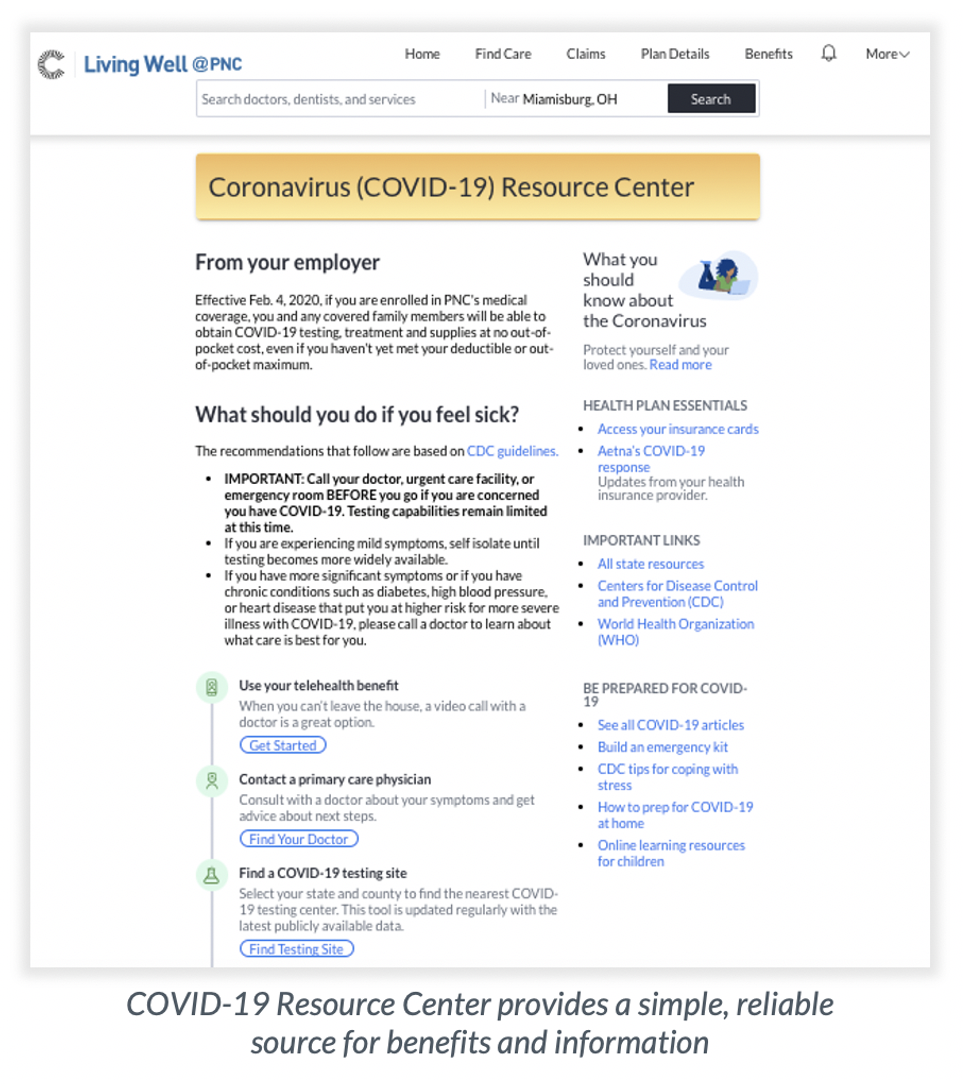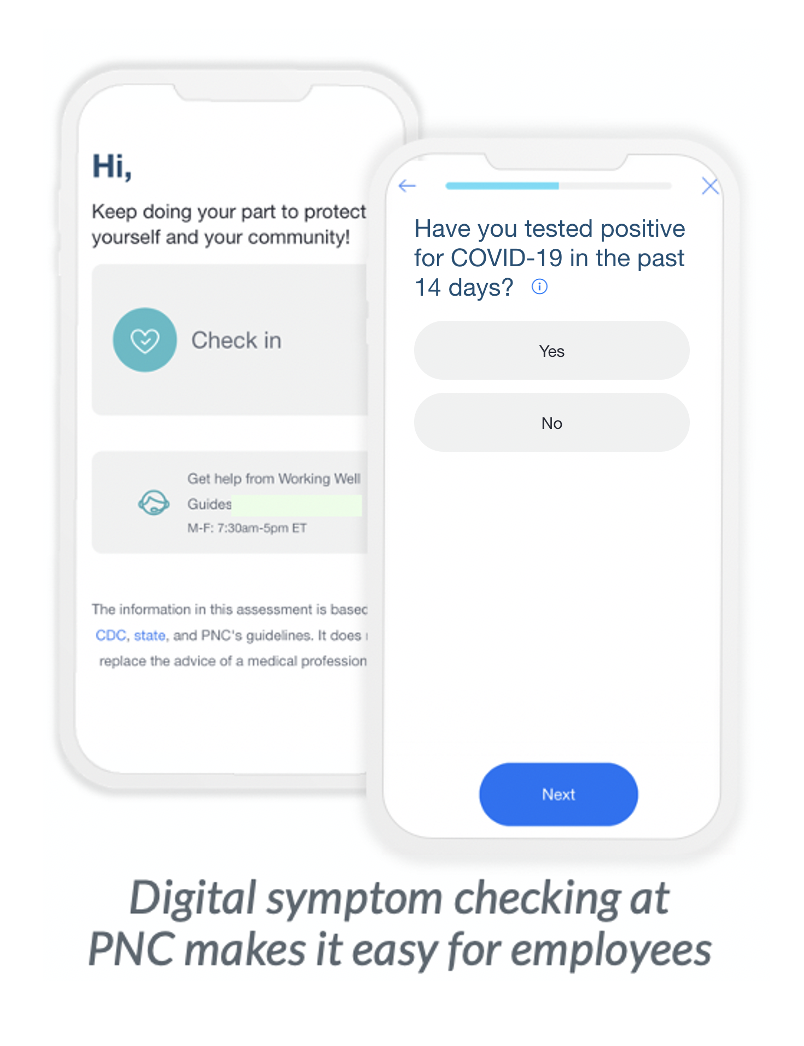The PNC Financial Services Group, a diversified financial services firm headquartered in Pittsburgh, PA, has 53,000 employees dispersed across the country, with approximately 2,300 branches in 37 states. Liz Harrington, Vice President of Health and Wellness Benefits Strategy, recently joined us for a discussion hosted by the National Alliance of Healthcare Purchasers Coalition to share PNC’s response and lessons learned during COVID-19—and how they address physical as well as behavioral health needs.
Physical Health
One common approach that employers are using is checking employees for symptoms and exposures. But how that information is collected can vary from company to company.
- Learning management platform for educational content
- Digital Cognitive Behavioral Therapy (CBT) tool for interactive education and coping tools
- Employee assistance program for educational content and access to counseling
- Teletherapy for access to counseling, if enrolled in PNC’s medical plan
PNC has opted to begin using a digital solution for symptom checking and managing workforce health, for a select group of its employees. A digital offering that is scalable was a desirable solution as the organization considers how to eventually bring back all of its employees into the workplace.
PNC believes this approach has benefits for employees. The mobile app is user-friendly, and employees can get clear guidance on next steps: if they are healthy they are cleared to enter a workplace; if they are symptomatic or exposed they are guided to stay home; and if they test positive, they are asked to contact the appropriate team at PNC for further support and guidance.
To help employees easily access resources and stay apprised of changes and new information about their and their family’s personal health and safety, PNC has leveraged a COVID-19 resource center. This center allowed PNC to house all COVID-19 related information an employee might need such as public health information, a link to a COVID-19 testing site directory, medical plan details, telehealth, and more.
Behavioral Health
COVID-19 has had widespread impact on mental health—both people experiencing new symptoms as well as those with an existing condition that is heightened during this time.
But as Liz shared, the good news is that employees want help and are proactively asking for support. One team specifically sought out a mental health clinician through PNC’s Employee Assistance Program to host a webinar discussion about the impacts of the pandemic on mental health—to help the group understand how the pandemic impacts people in different ways, strategies to support those with the need for extra help, and resources at PNC that are available to help.
One of the best ways to get employees to utilize behavioral health resources is to make it easy for them. In response to the pandemic, PNC created one easy point of access for all mental health-related resources on their intranet homepage. Employees can access a number of resources across the spectrum of care, including:
- Learning management platform for educational content
- Digital Cognitive Behavioral Therapy (CBT) tool for interactive education and coping tools
- Employee assistance program for educational content and access to counseling
- Teletherapy for access to counseling, if enrolled in PNC’s medical plan

A spectrum of resources is important to meet the needs of a diverse population. For example, tools such as digital CBT provides a low barrier to entry for someone seeking mental healthcare and allows people to build a skillset without committing to counseling. For those that would benefit from counseling, PNC has made all covered in-network telehealth, including teletherapy, available at no cost to employees and their family members enrolled in PNC’s medical plan temporarily during COVID-19.
Does easier access mean employees will use the tools more often? In 2019, PNC’s digital CBT tool had just over 1,000 employees and dependents engaged. After simplifying the experience to make it easy to access, the company saw this number increase to approximately 15,000—a more than 1,000% increase!
As Liz shares—and as this 1,000% increase underscores—one lesson learned during this time is that people want information about mental health for themselves as well as for their family members and loved ones. The best thing employers can do right now to support its employees during the pandemic is to proactively promote resources and make them easily accessible.



